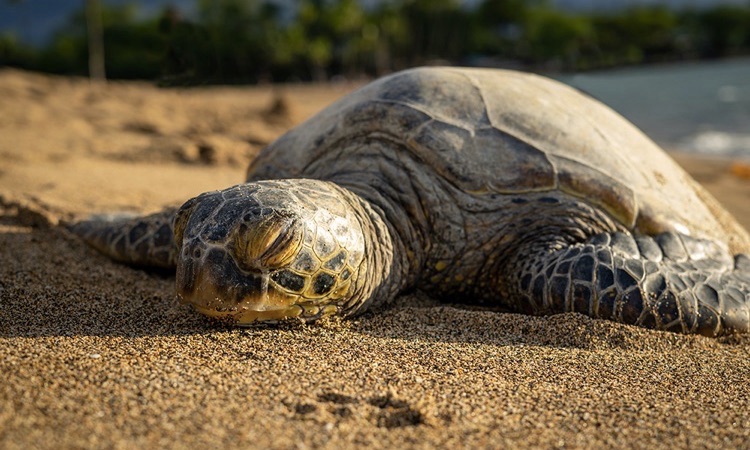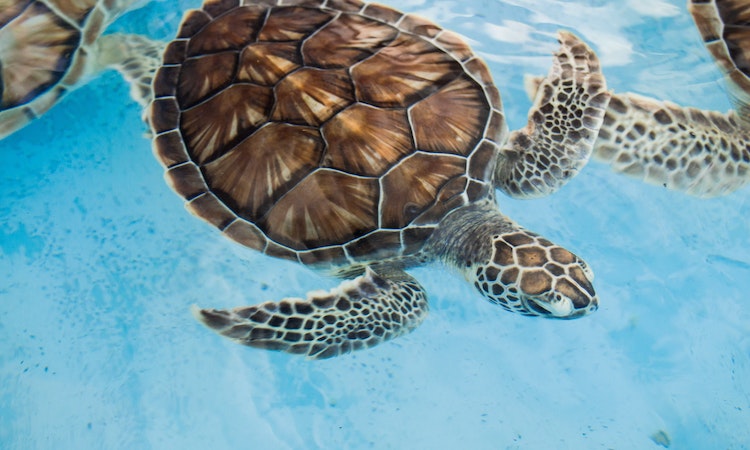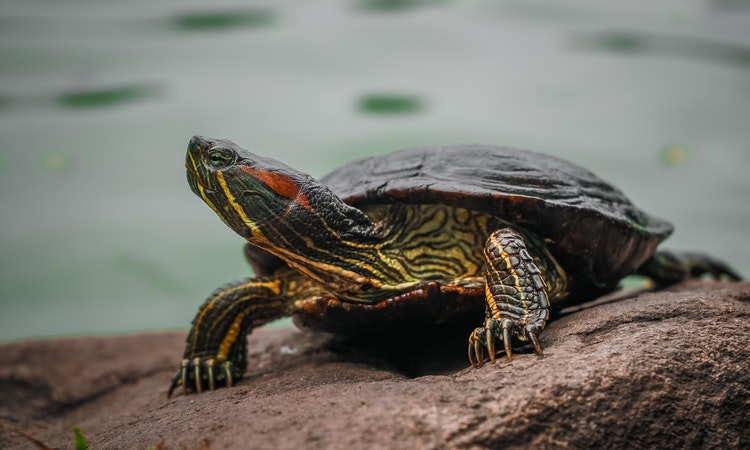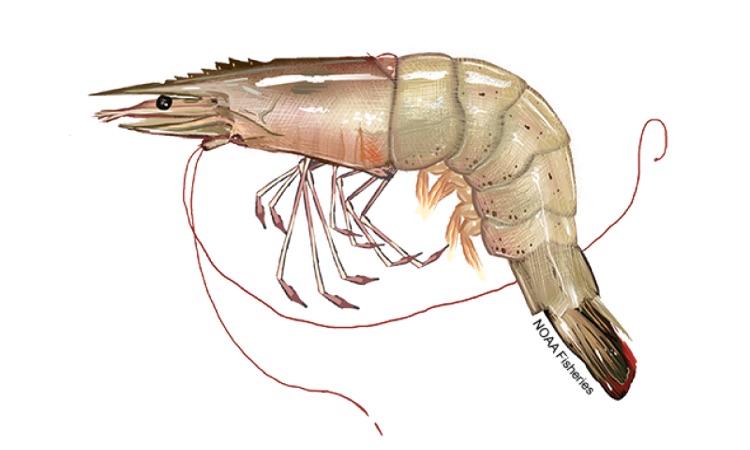Turtles are undeniably captivating creatures, which can be found in virtually any environment on our planet.
Not only do they come in hundreds of varieties, each featuring their own alluring physical characteristics and needs. But they also possess a range of intriguing behaviors that make them even more mesmerizing.
Turtles can be a wonderful pet for families, as they are relatively low-maintenance in comparison to cats or dogs, and most kids adore them!
While specialized care is necessary to create the best habitat for your turtle friend, it’s well worth the effort. A little bit of love makes turtles extraordinary pets that will bring delight for many years.
Our innate fascination with turtles has us asking a plethora of questions regarding their sleeping pattern. Is it even possible for them to sleep? Where and when do they find restful slumber? For how long can they stay asleep, regardless if in water or land?

So, Do Turtles Sleep?
Of course, turtles do sleep – just not like us. Rather than being a deep slumber, turtle sleep is characterized by their metabolic rate slowing down for some time. Additionally, they often take multiple naps throughout the day in order to conserve energy and remain alert.
If a turtle does not get enough sleep each day, it can have similar consequences as humans and other creatures.
Prolonged absence of slumber is one sign that something isn’t right and may require the attention of a veterinarian. To ensure your turtle’s health, please make sure they are getting their necessary rest every night!
Not only is a turtle in danger if they sleep too much, but when they do drift off to dreamland, turtles can be seen with their eyelids closed and bodies completely still.
When do Turtles Sleep?
Turtles are creatures of habit and generally prefer a regular sleeping schedule. To support your reptile friend in developing consistent habits, make sure to turn off the lights in its tank before nightfall each day.
Turtles need to bask in UVB rays, so it’s sensible that they would sleep during the night and look for sunlight hours instead.
Many species of turtles, including box turtles, green sea turtles, stinkpots, and common snapping turtles are naturally nocturnal creatures Meaning they spend their day asleep and become active as the night falls.

Where will Turtles Sleep?
To protect themselves from predators, freshwater turtles bury in the mud or sand while semi-aquatic turtles dig a hole into marshy regions.
As for sea turtles, they often seek refuge by hiding underneath underwater structures or even floating on the water’s surface when it is deep enough. Additionally, all three types of turtle may utilize thick vegetation to hide away from potential dangers.
Unworried turtles in captivity often take naps in their basking areas or platform, and may even choose to dig into the sand, drift across the water surface, or make themselves at home beneath structures found within their surroundings.
Turtles, like us humans, have different sleeping habits. Some turtles are creatures of habit and remain loyal to the same spot every night for their restful slumber whereas others prefer varying their location from time to time.
Other Questions About Turtles
How Long does a Turtle Sleep for?
The sleep requirements of turtles vary in accordance to age, type, and activity levels. Infant turtles need far more shut-eye than adult ones do, while those that lead an active lifestyle will require significantly more rest compared to their less energetic counterparts.
If you have a pet turtle, chances are it’s a red eared slider. These turtles often take long snoozes of up to seven hours throughout the day. Especially at night!
If your pet turtle is slumbering during the day, it could be a sign of sickness. Aquatic turtles usually need to sleep for four to seven hours each evening and larger land-dwelling species must rest significantly more than aquatic species. In fact, larger land-dwelling turtles spend most of their time sleeping in order to get enough shut-eye!
Turtles in their natural habitat have the incredible ability to hibernate for extended periods of time during cold weather. Although this is not necessary for pet turtles, they may still choose to rest and sleep more frequently than usual during winter months.

Do Turtles Sleep in their Shells?
Most turtles slip into their shells when it’s time for them to get some rest. Turtles have a protective instinct. Their tough shells guard and conceal them from predators.
Unlike the fairy tale, turtles do not physically come out of their shells. However they may shed some shell plates as they grow.
Sea turtles, however, are an anomaly. Due to their soft shells and inability to retract into them for protection, they cannot rely on this method of defense as other species do.
Do Turtles Sleep Underwater?
Turtles have remarkably low metabolic rates, allowing them to sleep for extended periods underwater without needing to resurface for air. In fact, many turtles do indeed rest in this manner. Proving that their slow and steady approach is beneficial even when it comes time to get some shut-eye!
Certain species of turtles, such as painted ones, can extract oxygen from the water, allowing them to stay submerged for extended periods. In particular, map turtles and sliders are popular pet turtles that have been known to sleep underwater for four or more hours without emerging. Musk Turtles and Mud Turtles also possess this remarkable ability!
While most turtles may submerge for extended periods during sleep, they often ascend to the surface periodically in order to replenish their oxygen levels.
Unlike other aquatic turtles, box turtles do not sleep in the water. Rather, they enjoy digging into soil or snoozing in their sunning location.

Can a Turtle Drown While Sleeping Underwater?
Turtles are not at risk of drowning in their slumber. Even though they don’t always remain afloat, their metabolic rate decreases drastically while sleeping and enables them to instinctively take a breath every so often.
When a turtle needs to breathe, the only way it will be prevented from doing so is if something obstructs its path back up to the surface.
Turtles in Hibernation
In many aspects, the sleeping habits of turtles are akin to our own. They seek out a tranquil area where they feel sheltered before they settle down for their nightly slumber, just like we do.
Ensure your pet turtle is provided with a suitable habitat for optimal slumber. Full of warm and comforting water and sand. Creating structures that will help it to feel secure as it gets some shut-eye allows them to rest more peacefully.
Ensure your turtle gets its much-needed rest by turning off the habitat lights in the evening. Just like us, getting a good night’s sleep is essential for our scaly friends!



